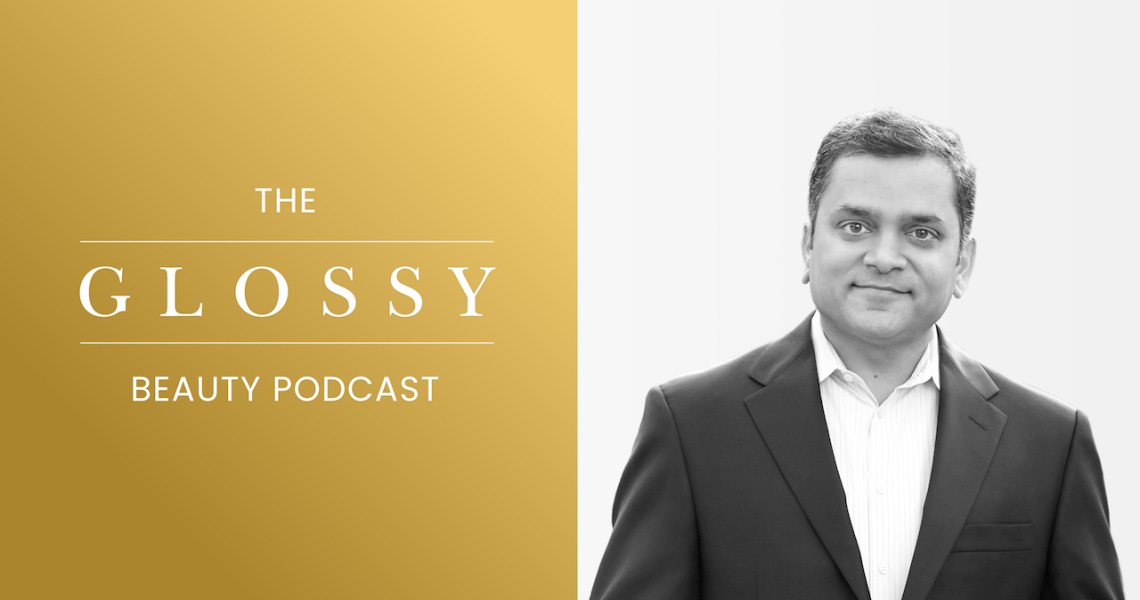Subscribe: iTunes | Stitcher | Google Play | Spotify
When E.l.f. Cosmetics went public in 2016 after a majority investment from TPG just two years earlier, it seemed like the sky was the limit for the millennial-minded beauty brand.
“E.l.f. has always been this brand that had the best of beauty, but made it accessible at these incredible price points,” E.l.f. Chairman and CEO Tarang Amin said on the Glossy Beauty Podcast.
The company had just reached about $100 million in yearly sales when TPG invested — in part by cracking how to sell $1 priced makeup online — and was growing 20% annually, according to Amin. But 2018 saw a slump in both the company’s sales and relevance online.
“For us it seemed like death,” Amin said.
The yearlong slowing of color cosmetic sales overall didn’t help his outlook. E.l.f. closed its 22 standalone stores in February 2019. But freeing up $13.7 million in capital helped the company focus on e-commerce and wholesale via its “Project Unicorn” plan to turn the business around.
Ad position: web_incontent_pos1
Thanks to a repackaging campaign (favoring colors, not just black), a renewed focus on fewer but better prestige-level products, and a TikTok brand challenge, E.l.f. has seen four quarters of growth. And in many cases, the company has bested its competitors in the makeup segment.
Amin talked about the ongoing headwinds in the color cosmetics category, the white space opening up in India, the company’s plan for incubation and M&A and his indifference, at first, to the rise of influencer-driven brands.
Here are a few highlights from the conversation that have been lightly edited for clarity.
Focusing on the company’s strengths
“We came back to what our real superpower is, which is creating these prestige-quality products at these unbelievable prices; as we looked at our business, we said, ‘This is what we uniquely do.’ But in 2018, we found ourselves caught in this trap of launching lots of new products very fast. In 2018, I think we launched almost 120 products, and we could do it in as fast as 13 weeks. We got so into how many products we were launching and how fast we were launching that we took our eyes away from what was most important in those launches, and it’s our unique ability to bring the best of beauty and make it accessible. In 2019, we brought innovations to market and put greater support behind them. That increase in marketing support that we got from closing the stores gave us the field to really make prominent things like our Poreless Putty Primer at $8 — the only other thing like it in the market was Tatcha’s Silk Canvas at $52 — or our camo concealers, which also did incredibly well. The only other thing like it is a prestige item at $26. Those are the items our retailers wanted, that our consumers wanted.”
The right time for acquisition
“Interesting areas are brands that may have shown a promising start but lack the capability in terms of really expanding distribution, or may not have the level of sophistication we have in our operations or supply chain. Brands that could really benefit from what E.l.f. could bring, and in turn that E.l.f. could benefit from in terms of a new capability or a new space that would take us a long time to develop, that we can get right away. We believe there’s a lot of potential out there.”
Ad position: web_incontent_pos2
Leveraging opportunity in China
“We’ve been in China for 16 years. A lot of our operational advantage comes from there. It’s not a sourcing office, it [brings] true multi-functional expertise across R&D, quality, sourcing, the entire spectrum [and] our ability to get the best combination of cost, quality and speed. I’d say the first focus for China is it does bring our ability to deliver high quality at this extraordinary price. The second focus for China for us is really e-commerce. We’re manufactured in country; we can go through a special regulatory approach that allows us to sell on e-commerce in China guaranteed without having any animal testing. Cruelty-free is such an important value to us as a brand. I don’t foresee retail in China because we don’t have those assurances yet on cruelty-free.”
And what that means for the U.S. and India
“If I think about the leap from China e-commerce as the world’s largest e-commerce market: There’s an entire skipping of a number of steps or generations that happened there. Particularly on mobile, and how savvy consumers there are on mobile, how much the ecosystem really supports that and the immediacy of it. Really I think it’s a good litmus test for what we expect to see in the U.S. in the future. I’m now starting to see the same thing in India, where it used to be you need to have a massive infrastructure to penetrate all the different villages and rural areas in India, and the speed at which you have the adoption of e-commerce and mobile and what that enables is really exciting for brands like us which really have their roots direct-to-consumer.”




